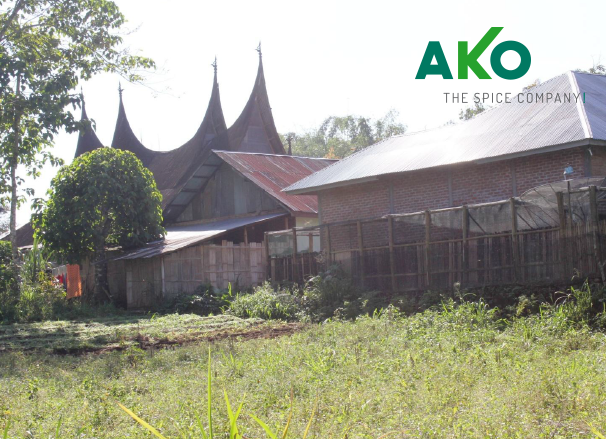We should call him Mike – and no it was not a farmer who collected us from the airport – but our Indonesian translator. Tall, with a dimmer skin and with intelligent eyes. His mood: stirring. An Indonesian who learned German at the University Medang in only two years. Singing German folk songs and reciting German poems, he rides us in a good mood through the land of the Minang. As a real Minang he accompanied us to cassia farmers, cassia scrabbers, collectors and exporter in West
Sumatra.
Cinnamon, thats what we learnt, is harvested in Central Sumatra, in Kerinci, in the region of Buttinggi and Palembang.
Once the Cinnamon farmers were rich. A Cinnamon tree was like a forest treasure. Like a bank deposit. If a family’s celebration lied ahead, the farmers had gone into the forest to peel their trees. And they bore the cost of the celebration with the money they gained from the Cinnamon bark.
But that quickly changed, when the financial crises attacked Indonesia in 1997. Currency collapsed. Rising inflation rates affected the economy. The prices of Cinnamon dramatically dropped down by 75 %. The Minang draw their conclusions from this and – according to the ancient tradition – sent their young generation into the main-towns, to earn money to support the family.
Many young farmers left their family and moved to cities like Jakarta, with wide-ranging impact to the Cinnamon trees: they were not maintained anymore.As the prices of Cinnamon rose again, nobody was there to harvest.
Cinnamon grows best at high altitudes between 4OO and 15OO m. The Cinnamon of the forest does not need pesticides, only a protected area to grow. On the contrary: Pesticides harm the sensitive Cinnamon tree, the trees will get sick.
Mike takes us to new plantings in place More than 2OO new cinnamon trees had been planted here. It will last about eight years, before they can be peeled. In the meantime, the farmers has sowed intermediate crops, to get income for the time being. Chilis, Cardamom and other spices are grown here in a kind of symbiosis to Cinnamon.
Honestly: we were sad, when Mike dropped us at the Airport of Padang, at the end of our journey. His German had been better than my Indonesian and his English worse than mine. But as a person he represented the open minding and the curiosity of the Minang, which we met during that days. They are friendly and eager to learn, who want to develop themselves. And they have every reason to be proud of themselves.
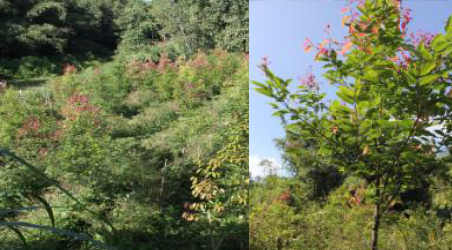
The old Cinnamon tree is a very true natural product. A real organic product! The farmers do not need to wait three years until the reach the ECO – Certification. Certificate of exemption are issued from recognized certifier even with the first harvest.
„Minang“ means prevail and „Kabau“ means water buffalo. And that is their story: once the king of Java tried to conquer Sumatra, which was well known for wealth and gold. He sent his son Adityawarman to Sumatra, to set up a fortified outpost of his kingdom in Sumatra. The population of Sumatra soon became clear, that they had no chance
to beat this army, Therefore they proposed a proxy battle with water buffalos. While the Javanese people put likewise their strongest buffalos in this battle, the Minang people send us a little buffalo calve. This calve had not been feeded for some days and had fixed iron dorns on ist horns. The Javanese did not recognize the Sumatra calve as an enemy. And the little calve – hungry as it was – looked for some milk to seemingly udder, slashing the stomach of the Javanese buffalo. The battle was won by the Minang and since that time they refer to themselves as Minangkabau. Even today the buffalo housetops witnesses this fairy-tale
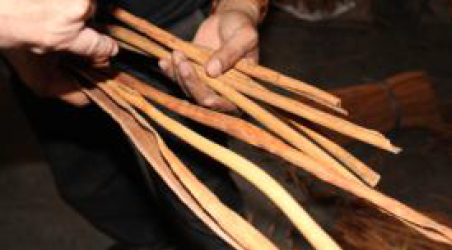
If the bark is closed, we called it KABC. You can recognize Cassia Vera AA because of its closed bark, rare spots and a diameter of around 1 cm.
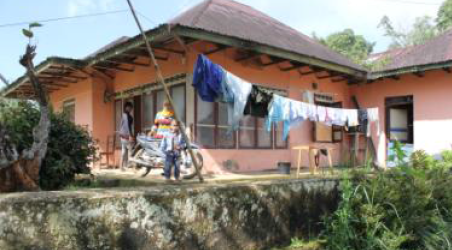
Farmers in the Highlands
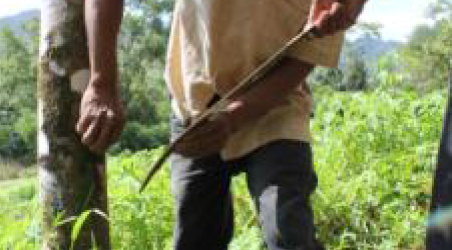 Peerling of the trees
Peerling of the trees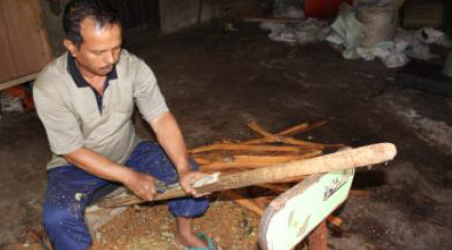
Scrabbing – Removal of the bark
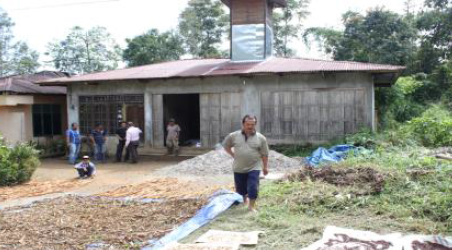
Drying
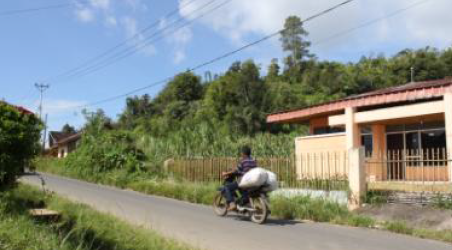
With the motorbike to the collector
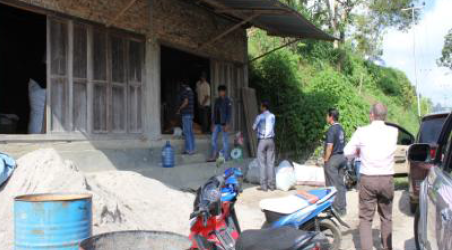
Collector in the village
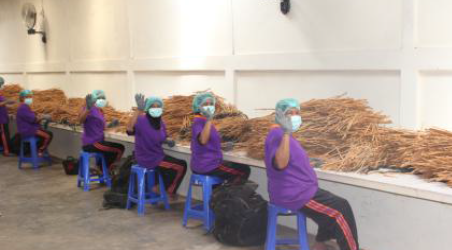
Recleaning and Processing at the exporter
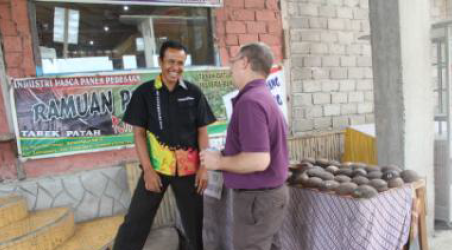
Translator and CEO

